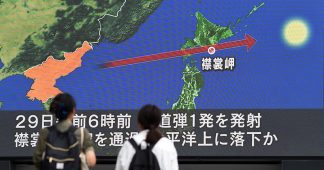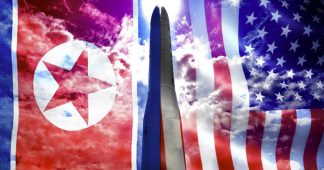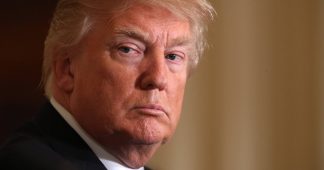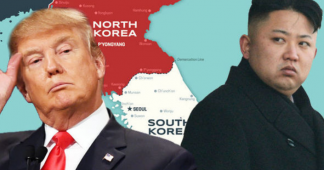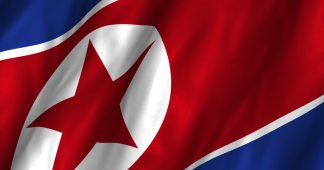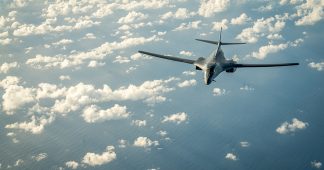By Kang Jie
On August 8, two US B-1B strategic bombers took off from Guam, flew over the eastern waters of North Korea and then returned to base. On that same day, US President Donald Trump threatened to unleash “fire and fury” against North Korea if it endangered the US.
The next day, North Korea made a tit-for-tat threat to strike Guam with its Hwasong-12 intermediate-range ballistic missiles.
This rare and open display of mutual threats between the two countries caused tensions in the Korean Peninsula to reach unprecedented levels. Almost two weeks later, the US and South Korea launched their annual joint exercise Ulchi Freedom Guardian (UFG), which is scheduled to come to an end on Thursday.
In response, North Korea test-fired three short-range tactical ballistic missiles into the Sea of Japan, in addition to issuing a tough denunciation of the US on Saturday. It also fired a missile over Japan on Tuesday.
In just half a month, the two sides have found themselves caught up in a vicious cycle that seemingly has no end in sight.
Considering the rising tensions between the two nations this month, why did the US decide to go ahead with its plans to carry out military exercises with South Korea?
This must be considered from both a military and diplomatic perspective.
Under the framework of the US-ROK Mutual Defense Treaty, the two countries hold several joint military exercises each year. The most important are the Key Resolve/Foal Eagle exercises, which are usually conducted between February and April, and UFG.
The first two involve large-scale field exercises simulating actual combat, with a focus on offensive and preemptive tactics; the latter is a command post exercise that highlights joint command, communications and civil defense.
Though UFG lags far behind Key Resolve/Foal Eagle in scale, drill strength and duration, it’s a significant and indispensable event for maintaining US-South Korean joint fighting capabilities. The importance of joint command and control between the two militaries has only increased after the deployment of the US-backed Terminal High Altitude Area Defense (THAAD) system.
US senior military officials have stated that UFG is mainly a defensive drill that doesn’t involve the deployment of large-scale offensive weapon systems and hence poses little threat to North Korea. However, the ongoing military drill is also being attended by senior military officials as a demonstration of the US’ tough stance concerning North Korea.
Considering the current highly strained situation, this regular exercise is as dangerous as dancing on the edge of a cliff, as the slightest mistake will only serve to escalate tensions.
But this is exactly what the US wants, as a turbulent peninsula is in line with its fundamental interests. Maintaining the situation on the peninsula at a chaotic but controllable level is the only way the US can ensure that South Korea and Japan continue to remain militarily dependent and willing to tow the line.
When the US plays hardball during times of crisis and shows strong support for its allies, this also boosts its allies’ strategic confidence and strengthens alliances.
It is in this way that the US has maintained its Asia-Pacific hegemony and continued to counter China.
It is for this very reason that the US’ insistence on holding military exercises that provoke North Korea is a necessary and compulsory move in safeguarding its East Asia alliance system and strengthening US-South Korea military relations.
In recent years, whenever the US and South Korea hold joint military drills, North Korea always test-fires missiles in response. In August 2016, Pyongyang test-fired the Polaris-1 submarine-launched ballistic missile in response to that month’s UFG. It also launched several multi-model missiles during the Key Resolve/Foal Eagle military exercises this year.
As these missile tests correspond with US-South Korea military drills, when military drills increase in scale and aggressiveness, the missiles that Pyongyang test-fires become more advanced and feature longer range. When this is not the case, North Korea correspondingly test-fires shorter range missiles.
For the foreseeable future, the US and South Korea are not going to relieve military pressure on North Korea, and North Korea is not going to abandon its nuclear program, which means this conflict is going to continue.
But this new tense status quo actually works in the favor of all involved: the US uses the threat of North Korea to maintain its hegemony in East Asia and strategically contain China; North Korea has reason to continue pushing its nuclear development program; and the South Korean and Japanese governments can use this as an opportunity to win public support and influence their domestic political agendas.
Fortunately for the rest of the world, since no one can afford the consequences of what would happen if this crisis spins out of control and war breaks out, both Washington and Pyongyang will continue in their current vein, guaranteeing that the peninsula will continue to be mired in a messy and chaotic situation.
But while this may be profitable for the US and North Korea, it is a situation that is unstable and difficult to control. There have been numerous examples of those who played with fire and got burned. And if things go south, it won’t be just the US and North Korea that has to pay the consequences.
This is why a stable regional situation is most beneficial to the overall interests of countries in the region and to the well-being of its people.
To achieve this end, the two sides should reduce their military drills and nuclear tests respectively to help ease tensions.
The author is an assistant research fellow at the China Institute of International Studies. opinion@globaltimes.com.cn
Posted in: ASIAN REVIEW
